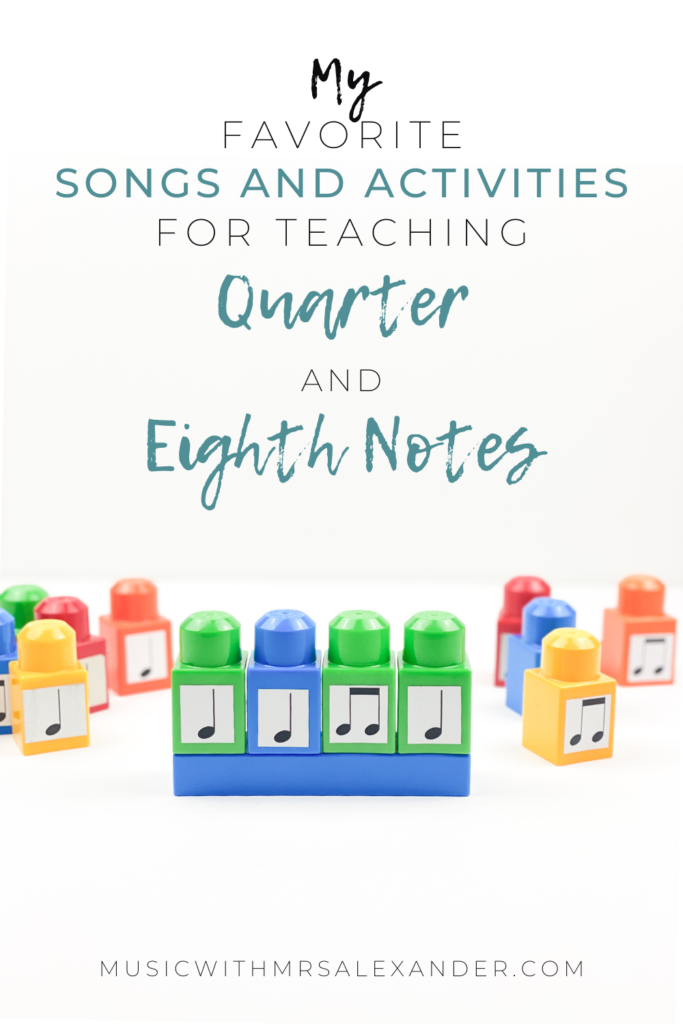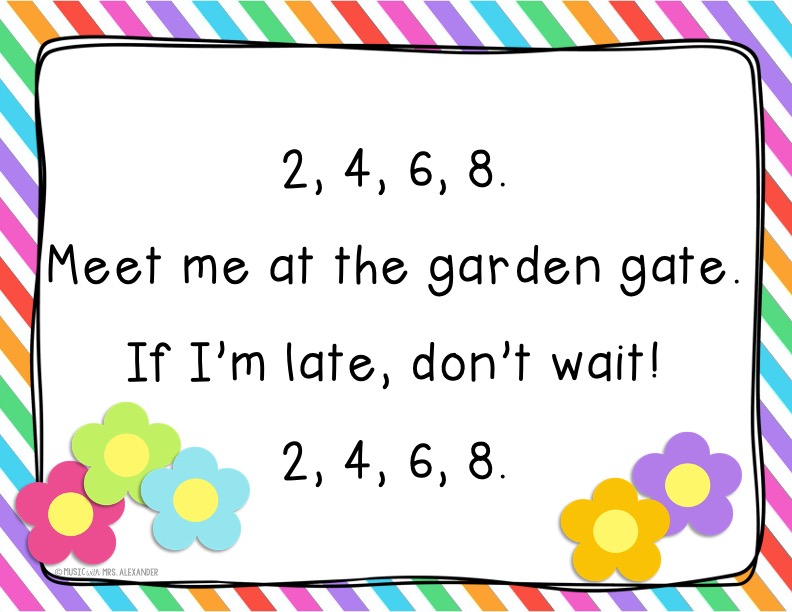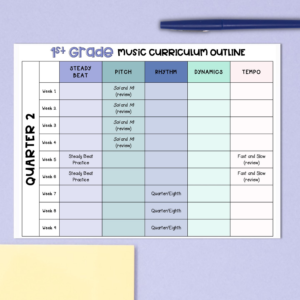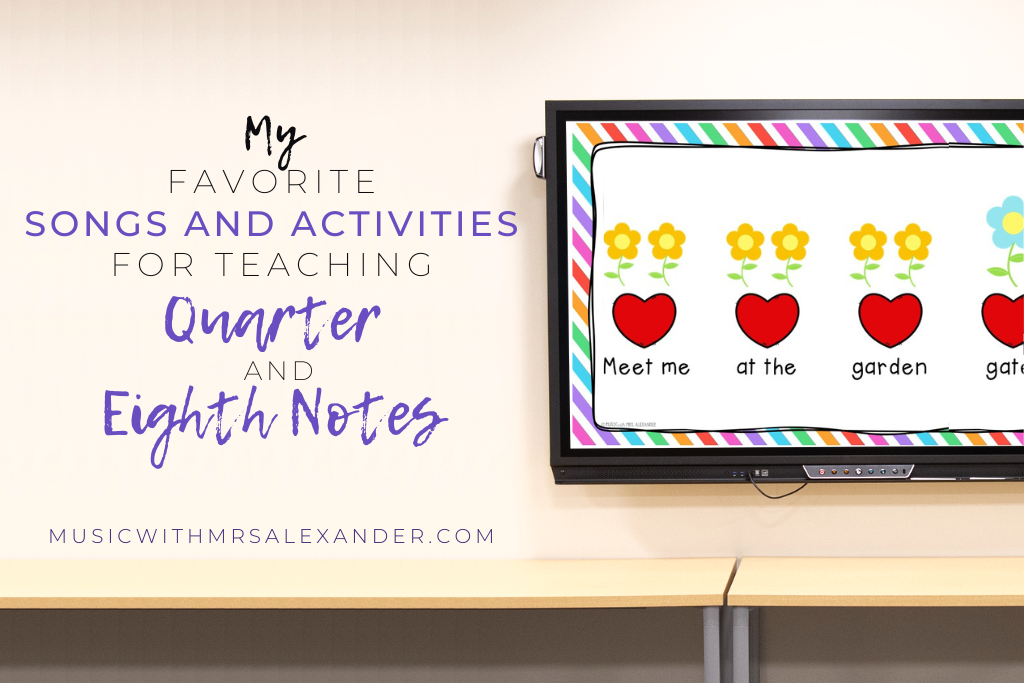
The quarter/beamed eighth note combination (or ta and ti-ti, du and du-de, etc.) is typically the first experience with rhythm in most elementary music classrooms. In order to lay a solid foundation and ensure our students understand the concept of one and two sounds on the beat, we need to provide many opportunities for them to sing, play, and experience these rhythms to develop their understanding. Here are a few of my favorite tried and tested activities for teaching quarter and eighth notes to my youngest students.
Songs for teaching quarter and eighth notes
2, 4, 6, 8
I like using the chant 2, 4, 6, 8 in first grade to prepare ta and ti-ti. It’s also great for reinforcing the difference between steady beat and rhythm. In the first lesson, I teach the chant through immersion. We practice saying the words while patting the steady beat on our laps. Then, I say the words while clapping the rhythm. I ask my students, “Did that sound like the steady beat?” They vote by giving me a thumbs up/thumbs down. We say and clap the words together, and I introduce the term rhythm-a pattern of short sounds, long sounds, and silences. I remind them that the rhythm follows the syllables of the words.
We transfer the steady beat and rhythm to instruments next. As a class, we pat the steady beat while saying the chant for a few rounds. Then, we switch to playing the rhythm. Once the students are comfortable, I divide the class in half. We say the chant twice–one group plays the beat, and the second group plays the rhythm.
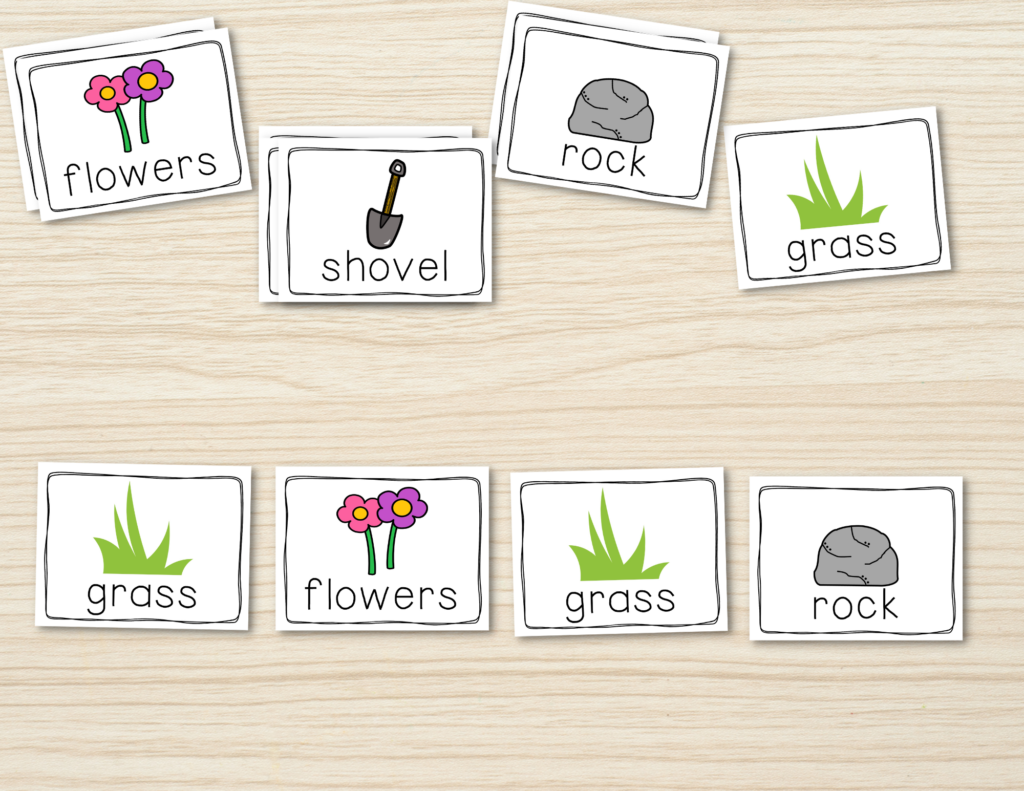
In the next lesson, we create an interlude using garden-related words. Each student (or group of students) gets a set of word cards. They arrange the cards in a pattern, then they say and clap the rhythm they created.
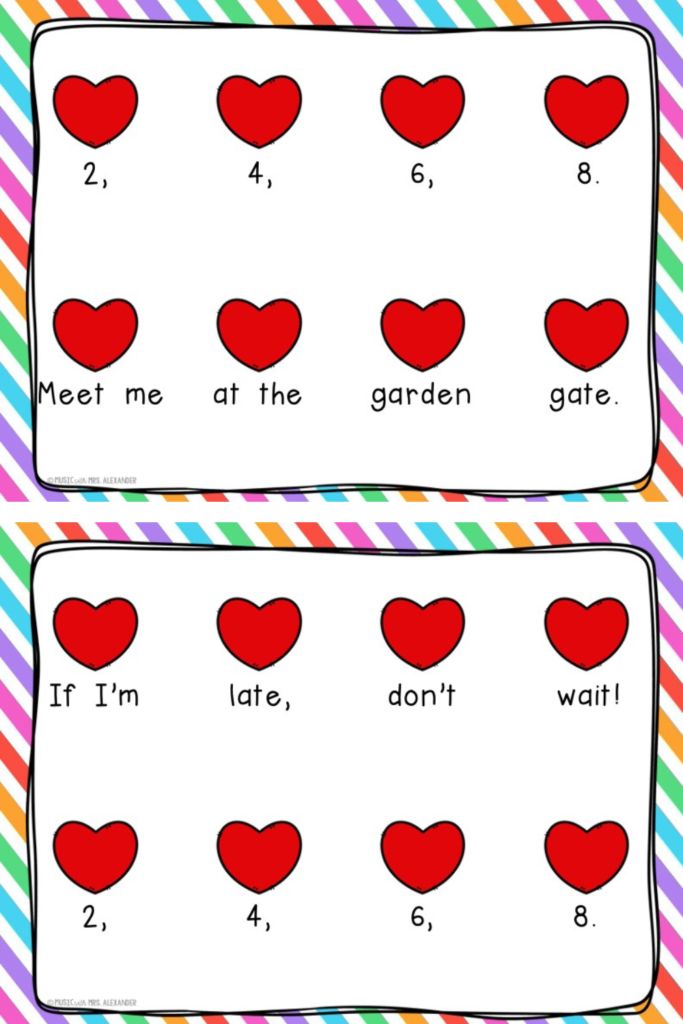
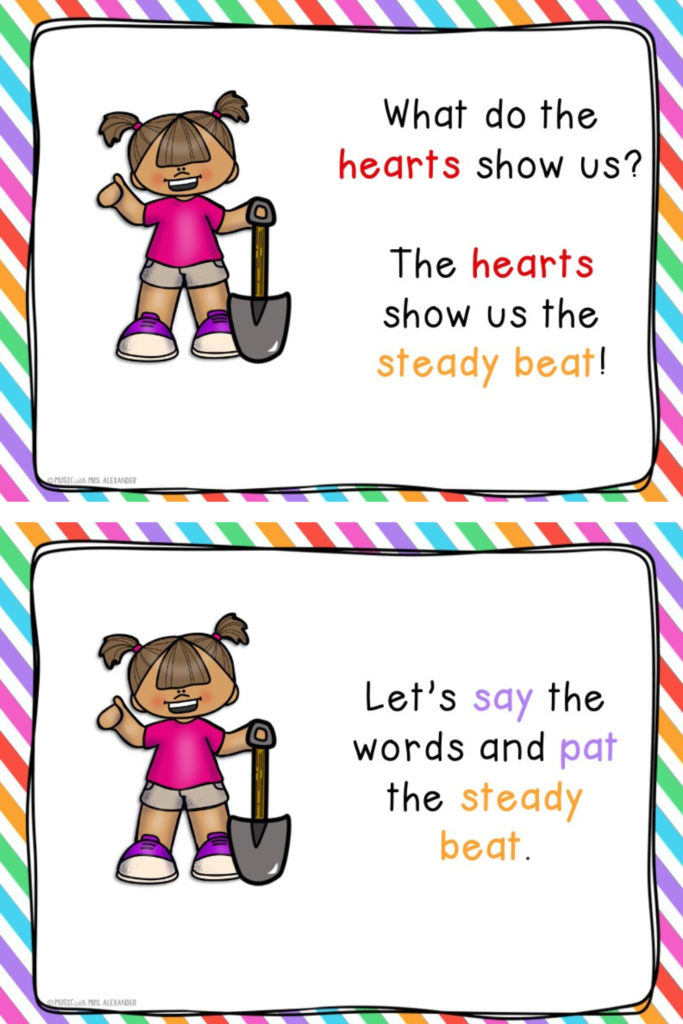
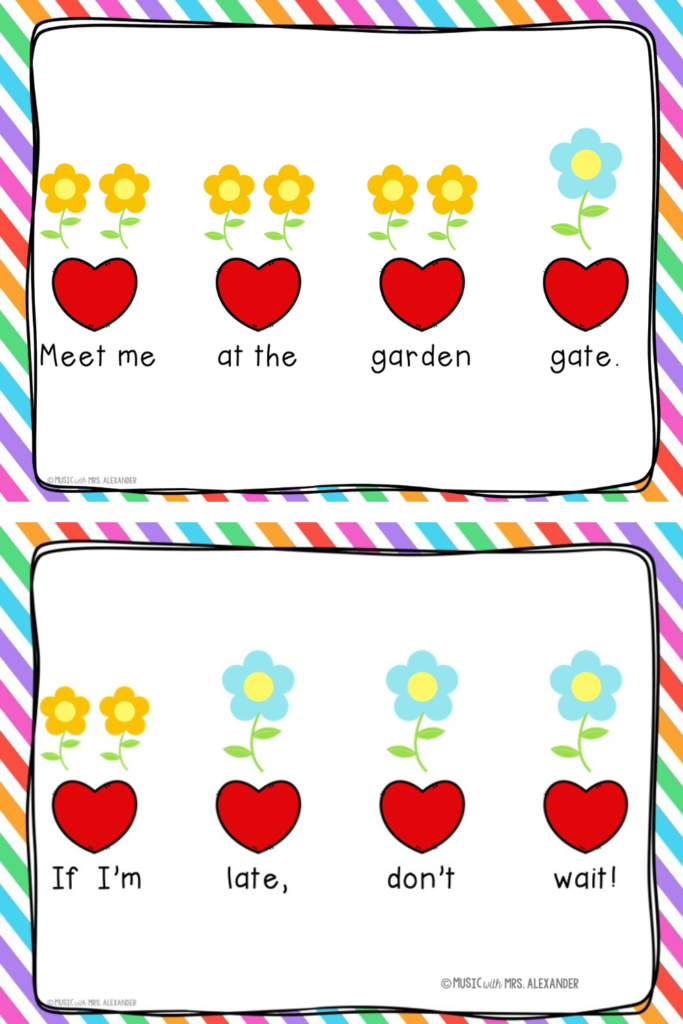
In the final lesson, I introduce ta and ti-ti. We learn that ta is one sound on the beat and ti-ti is two. Then, we do a word hunt and find all the places we see our new rhythms in the music room. I never skip this step because it teaches them how to use the word wall and anchor charts to help them find answers. (Read more about how I purposefully decorate my music room here!) To end this lesson, we use rhythm blocks to create ta/ti-ti patterns. I start by having them copy rhythms I put up on the Smartboard to reinforce building from left to right. Then, I say and clap a pattern, and they build it, which helps develop their aural skills.
Apple Tree
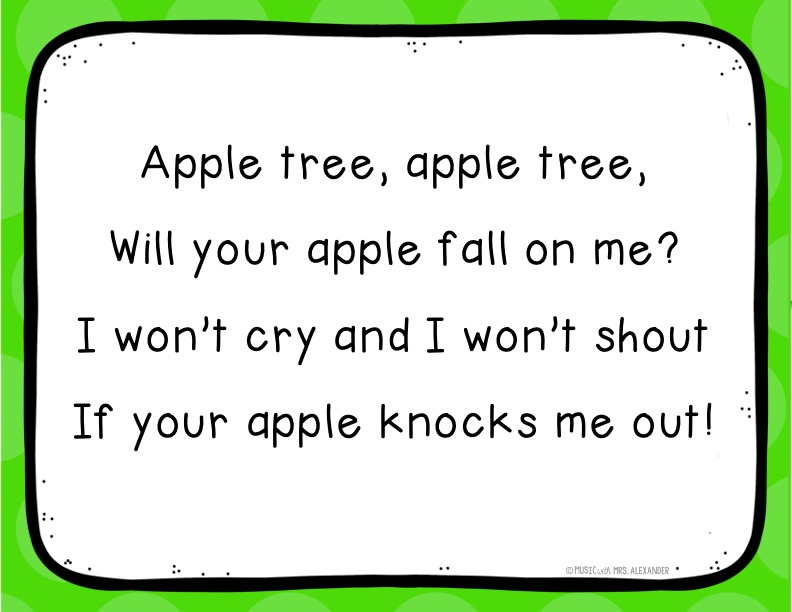
Apple Tree is another all-purpose song that I use to teach a variety of concepts. In the first lesson, we learn the song and play the game. First, we make a circle and practice walking to the steady beat while singing. To play the game, two students create an arch with their arms. Then, the rest of the class walks through the arch to the steady beat while singing. On the word “out,” the arch comes down and traps a student (or students). They get added to the tree, and the game continues. The game ends once everyone has been caught, or once we have played a couple of rounds and no one has been caught.
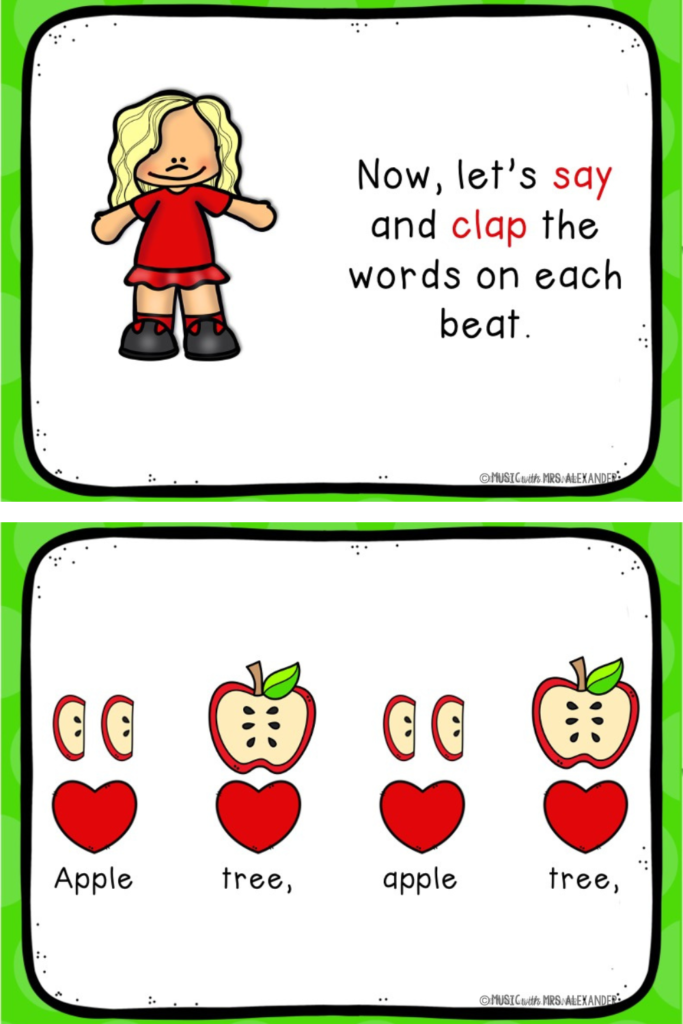
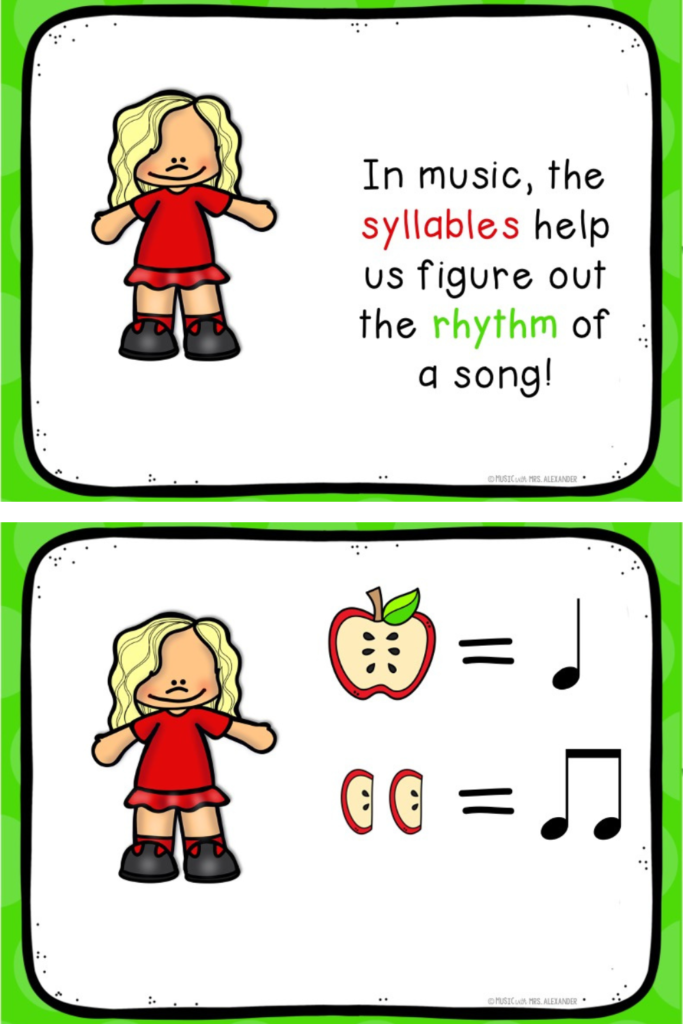
In the second lesson, my students decode the rhythm of Apple Tree using craft sticks and steady beat hearts. First, I show them the words of our song under the steady beat hearts. Then, we say and clap the words on each beat. We count our claps and place craft sticks on the hearts to show the number of syllables on each beat. Once we have decoded each line, we say the words and clap the rhythm.
Did I mention how much I love using manipulatives when teaching rhythm? Hands-on is definitely the way to go! If you’re looking for a deep dive on manipulatives in the music room, you can check out this blog post!)
In the third lesson, I introduce the words ta and ti-ti (along with quarter note/eighth notes). We review the rhythm we decoded the week before and reinforce the difference between steady beat (the hearts) and rhythm (the apple icons). We use the craft sticks and steady beat hearts from the previous lesson to build ta/ti-ti rhythm patterns together.
Activities for teaching quarter and eighth notes
Roll and Cover
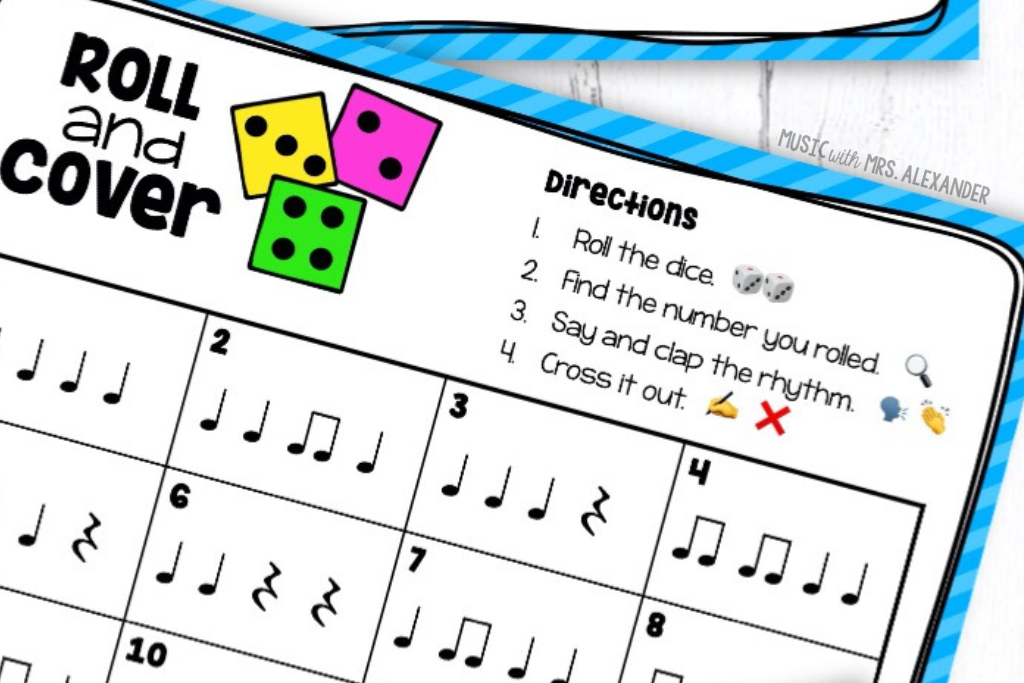
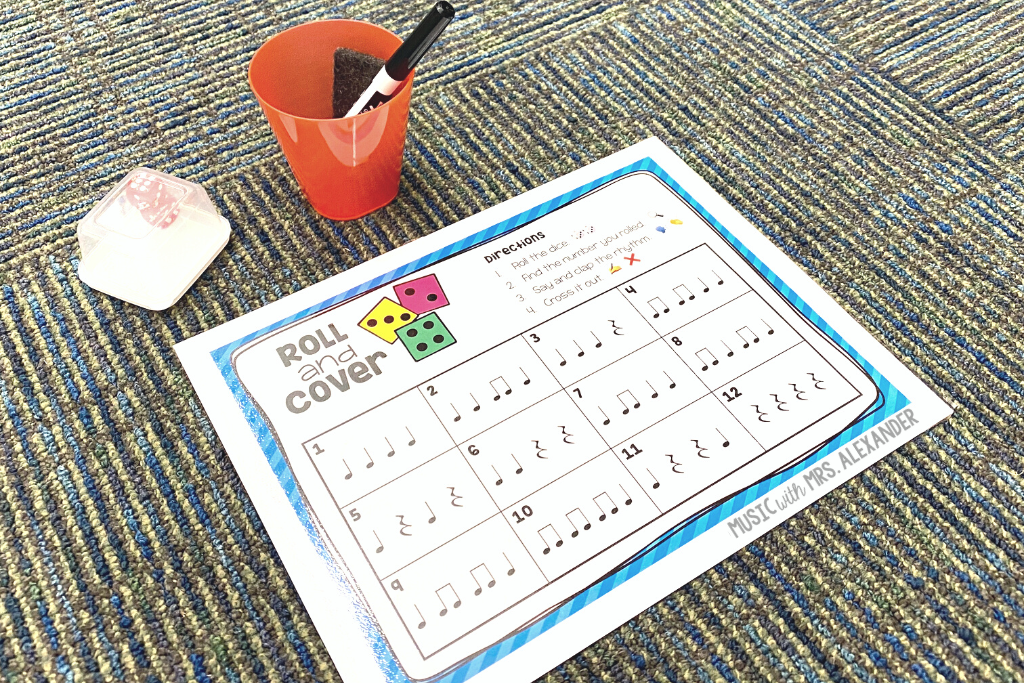
Roll and Cover is an “easy entry” station activity I use for rhythm review. It’s pretty much just reading and clapping an entire page of rhythms, but the dice are what turn it into a fun game! Each student gets a marker, an eraser, dice, and a game board. They roll the dice (which stay in the container), then say/clap the rhythm of the number they rolled. Then they cross out the rhythm and do it again.
Grab a FREE copy of my Roll and Cover station here!
Say It, Build It, Write It
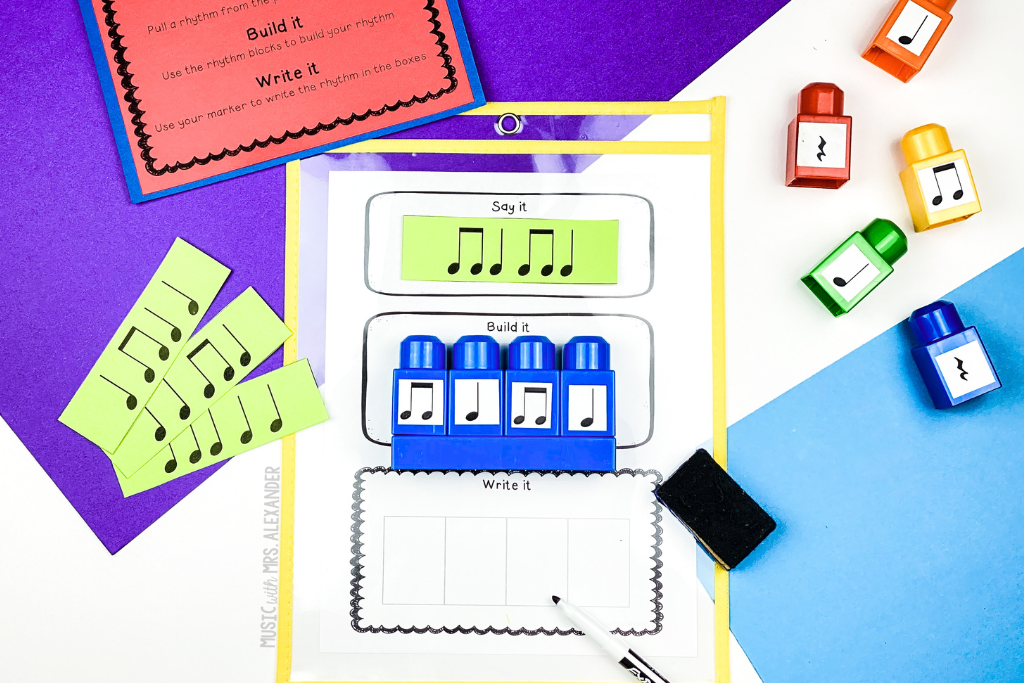
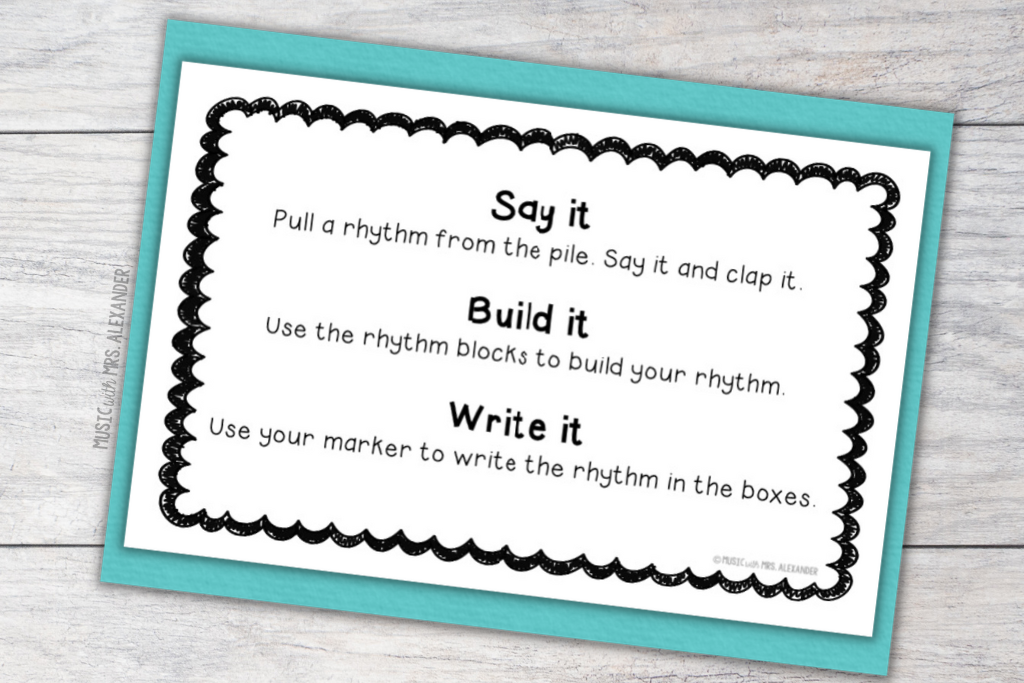
Another beginner rhythm station that works great at the beginning of the year is Say It, Build It, Write It. I leave it in my sub plans because it’s an independent activity that’s easy enough for a non-music sub to supervise. My students love it because they get to play with the rhythm blocks! Each student needs a marker, an eraser, a set of rhythm blocks, and a work mat. The color groups share a set of ten rhythm cards. First, they pull a rhythm from the pile, then say it and clap it. Then, they build it with their blocks and write it at the bottom of the work mat.
Rhythm Bingo
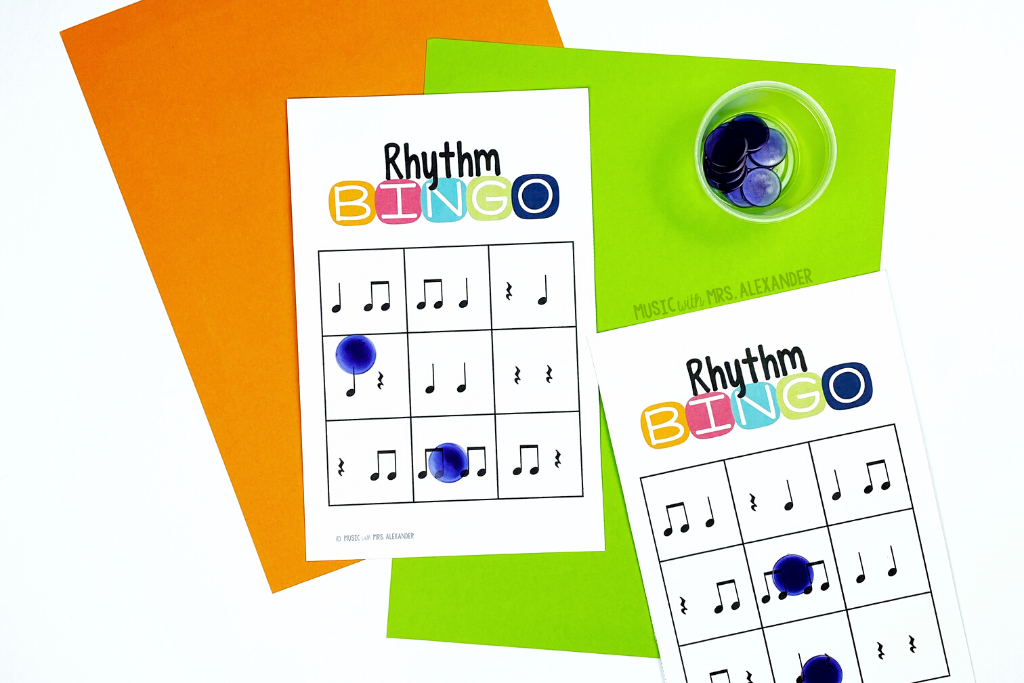
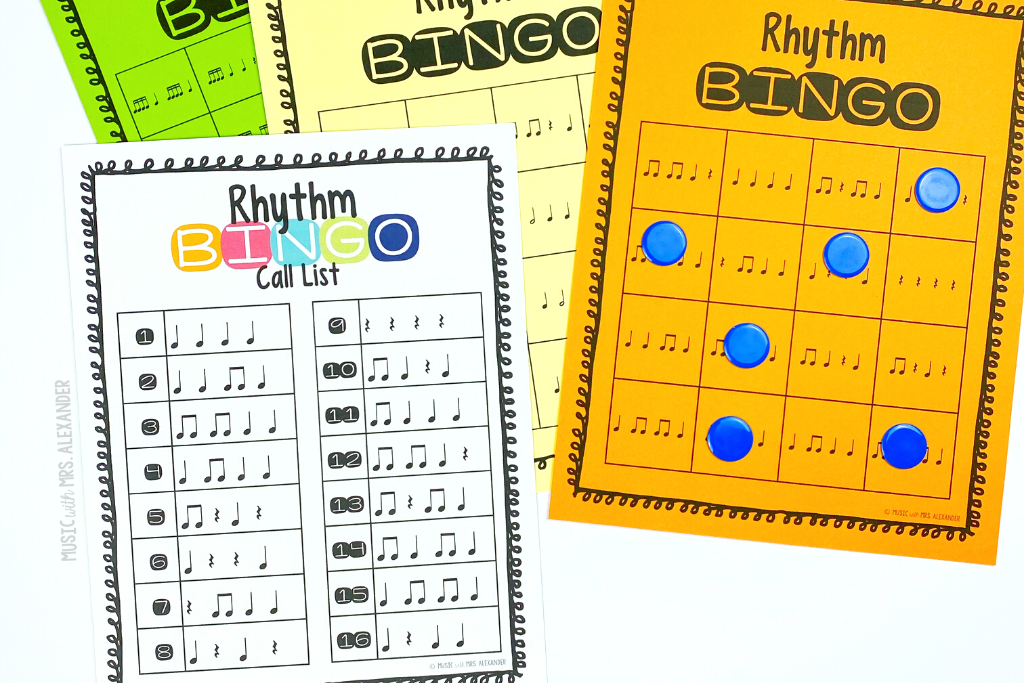
Rhythm Bingo is a fun whole-class activity for practicing rhythm recognition. When I play this game with my students, we play with a partner the first few times. Two heads are better than one, right? It can be helpful for a less confident student to have a partner to help them find rhythms on the bingo board. Our first task is simply finding the correct pattern on the game board. I use my document camera to project a game board for the class, and I circle the right rhythm after I say it. Once the students have practiced finding the rhythms with my help, they play independently. I call out a pattern, and they cover it on the board. As a final challenge, I clap/play the rhythm, and they must listen to find the correct answer.
I hope this post has given you some good ideas for teaching quarter and eighth notes in your elementary music classroom. If you want to ease the burden of lesson planning, I have complete, ready-to-teach units for teaching rhythm available-lesson plans, visuals, student materials, and even center activities! Click here to check them out!
